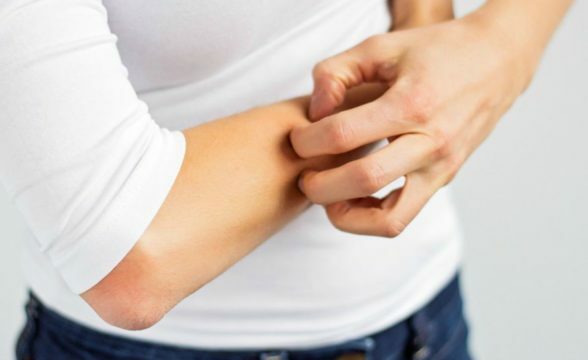Diabetes mellitus is a polysymptomatic menacing disease that can be manifested in patients in different ways. Nevertheless, there is a certain algorithm for the development of events. It all starts with increasing blood sugar. In the absence of adequate treatment, many patients begin to show signs of specific complications over time. One of the most common questions of people suffering from "sweet disease" is: "Why do leg pains occur in diabetes mellitus?".To answer it, one must understand the mechanism of development of the pathological process, which leads to the formation of this symptom.
What's going on?

Constantly high level of glycemia adversely affects all organs and systems of the human body. Sugar in the blood is not as terrible as its consequences. Molecules of glucose damaging effect on blood vessels and nerve endings, which actually causes unpleasant sensations.
Important points that potentially affect the appearance of pain:
- Age of the person. It's not unfortunate, but with the aging of the entire body, there are changes in the capillaries. They become less elastic, clogged with slag, and still permanently damaged by sugar compounds. All this aggravates the condition of the patient and causes pain in the legs;
- Level of glycemia. There is a correlation between the amount of glucose in the serum and the manifestation of all the characteristic symptoms, as well as unpleasant sensations in the lower limbs;
- Lifestyle. The less the patient moves, the worse he feels. Because of stagnation of blood in the farthest from the heart parts of the body, formation of edema is observed, which actively presses on nerve endings and causes pain;
- The state of the cardiovascular system and blood. Very often, diabetes mellitus( DM) goes hand in hand with arterial hypertension( AH) and atherosclerotic lesions of all vessels. All this only aggravates the symptoms of insulin insufficiency or resistance of peripheral tissues to its effects. It is necessary to conduct appropriate treatment of concomitant pathology in order to get rid of the characteristic symptomatology;
- Weight. Type 2 diabetes is often accompanied by excessive body weight of the patient. This provokes an additional load on the joints and muscles, which, in turn, causes discomfort. The best option is weight loss.
What causes pain?
There are 2 basic mechanisms for the occurrence of such unpleasant sensations in the lower limbs:
- Ischemic. Blockage and damage to small vessels leads to a decrease in blood circulation in peripheral tissues. Permanent oxygen starvation causes atrophy and death of cells with the release of inflammatory mediators( histamine, prostaglandin).They damage the nerve endings that transmit impulses to the cerebral cortex and the person experiences pain;
- Neuropathic. In this case, the cause is nerve dystrophy. It is caused by inadequate nutrition of neurocytes in the conducting systems of the legs. They die and normal trophic processes in the lower limbs are disrupted. As a result, loss of pain, temperature and tactile sensitivity. The person simply does not notice small cuts and wounds on the feet. Very often, a bacterial infection joins in this, ulcers occur. Only in the later stages of the pain experience progress, and the patient begins to complain.
Both variants of tissue damage are a consequence of hyperglycemia. Therefore, the main focus of therapy should be done specifically to eliminate it.
How does it hurt?

Depending on the mechanism of development of discomfort, there will also be subjective symptoms.
In the case of an ischemic variant of the problem, the patient will file the following complaints:
- pain as burning in the legs and feet. Pulsating sensations are often observed;
- discomfort may occur at rest, but more often after physical exertion;
- the skin pale, sometimes acquires a bluish tint;
- formed painful ulcers with fuzzy boundaries;
- may cause local hair removal in places of poor circulation;
- the temperature of the affected limb drops.
The degree of symptom severity depends on the percentage of obstruction of the vessels.
If the lesion is of a neuropathic type, the patient notes:
- is a rare aching sensation that is not related to physical activity;
- skin of normal color, sometimes even reddens;
- in places of contact with shoes often appear painless sores with correct and clear boundaries;
- the temperature of the limb remains normal;
- loss of tactile sensitivity.
Treatment of both options in most cases requires surgical intervention, if the wound surfaces have already formed.
What should I do?
The main direction in the treatment of foot pain in diabetes mellitus remains the normalization of the level of glycemia. If you keep glucose in check, then the vessels will not be exposed to its pathological effects. Depending on the type of disease, the complex of medication procedures may differ.
In the first version of diabetes, insulin should be used for life. Only such treatment can accurately prevent the development of unwanted complications.
With the 2nd type of "sweet disease" you need to take sugar-reducing drugs, because the problem is not in the amount of the hormone of the pancreas, but in the resistance of peripheral tissues to its action.
In addition, there are special recommendations that are effective in treating both variants of the ailment and are useful even for healthy people:
- Comfortable shoes. Many people in the race for fashion ignore comfort. As a result, permanent minor trauma to the lower limbs with the development of pain.
- Weight control. Excess weight always adversely affects the condition of the joints and bones. Additional stress leads to reduced endurance and damage to internal structures.
- Treatment of concomitant pathology. Kidney problems and diseases of the cardiovascular system often cause the formation of edema, which only aggravate the course of diabetes.
- Dosage physical activity. It is enough to pass 3 km a day to improve the condition of the microcirculatory channel of the lower limbs and eliminate discomfort.
- If the first signs of abnormalities occur on the side of the vessels, then you should always seek medical help. In time, the treatment started can prevent the deplorable consequences.
Folk wisdom and local therapy
You can also use the knowledge of alternative medicine to stop the pain syndrome in your legs.
The following procedures and recipes have proved to be good:
once a day to hold a contrast shower for feet.10 minutes of hot water and 3 minutes of cold water. Such treatment stimulates local blood circulation, which removes pain.
Infusion from the comfrey.1 tbsp. A spoonful of a well-crushed root of this plant is poured into 1 liter of vodka. Insist in a dark place for 3 weeks. After the end of the period, filter and dilute with water until 3 liters of liquid are obtained. Take 1 tbsp.spoon three times a day after meals.
Water vibrating massage. Well operate a variety of aqua-massagers. Like the contrast shower, they normalize local blood circulation and promote the resumption of sensitivity.
For topical use is a perfect mixture of aloe juice and essential oils .For its preparation, you need:
- plant extract;
- menthol;
- carnation;
- eucalyptus;
- wintering;
- camphor.
All these liquids mix and rub the painful leg areas 3 times a day. The result appears after the first day of use.
The use of similar methods for the treatment of leg injuries is recommended if a consultation with the attending physician was previously conducted.



